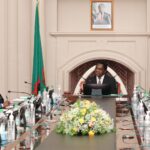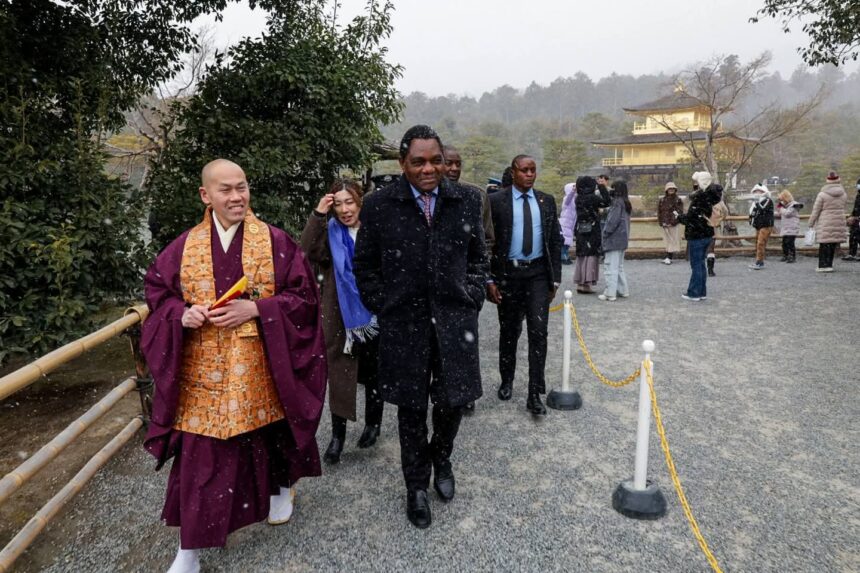President Hakainde Hichilema recently visited the iconic Kinkakuji Temple in Kyoto, Japan, braving the afternoon snowfall to experience one of the country’s most revered cultural landmarks. As a UNESCO World Heritage Site, the Kinkakuji Temple stands as a testament to Japan’s rich history and architectural excellence. Originally constructed in 1397 as a retirement villa for Ashikaga Yoshimitsu, the 3rd Shogun of the Muromachi Shogunate, it was later transformed into a Zen Buddhist temple. The temple is renowned for its gold leaf-adorned structure, symbolizing Japan’s deep cultural and spiritual traditions.
During his visit, President Hichilema walked through the temple’s beautiful grounds and spoke about the importance of preserving historical sites. He emphasized that safeguarding these landmarks is not only vital for their cultural value but also for their potential to boost tourism and economic growth.
“The beauty and heritage of Kinkakuji remind us of the significance of safeguarding our own cultural treasures,” President Hichilema remarked. “Preserving historical landmarks is essential in shaping our collective future and growing our tourism sector.”
His visit highlights Zambia’s commitment to learning from global best practices in cultural conservation. By drawing inspiration from international examples like Kinkakuji, Zambia aims to use its own cultural heritage to promote tourism and foster economic development.






